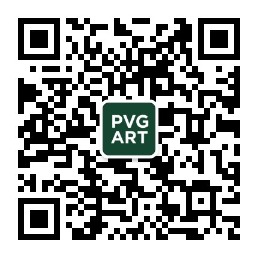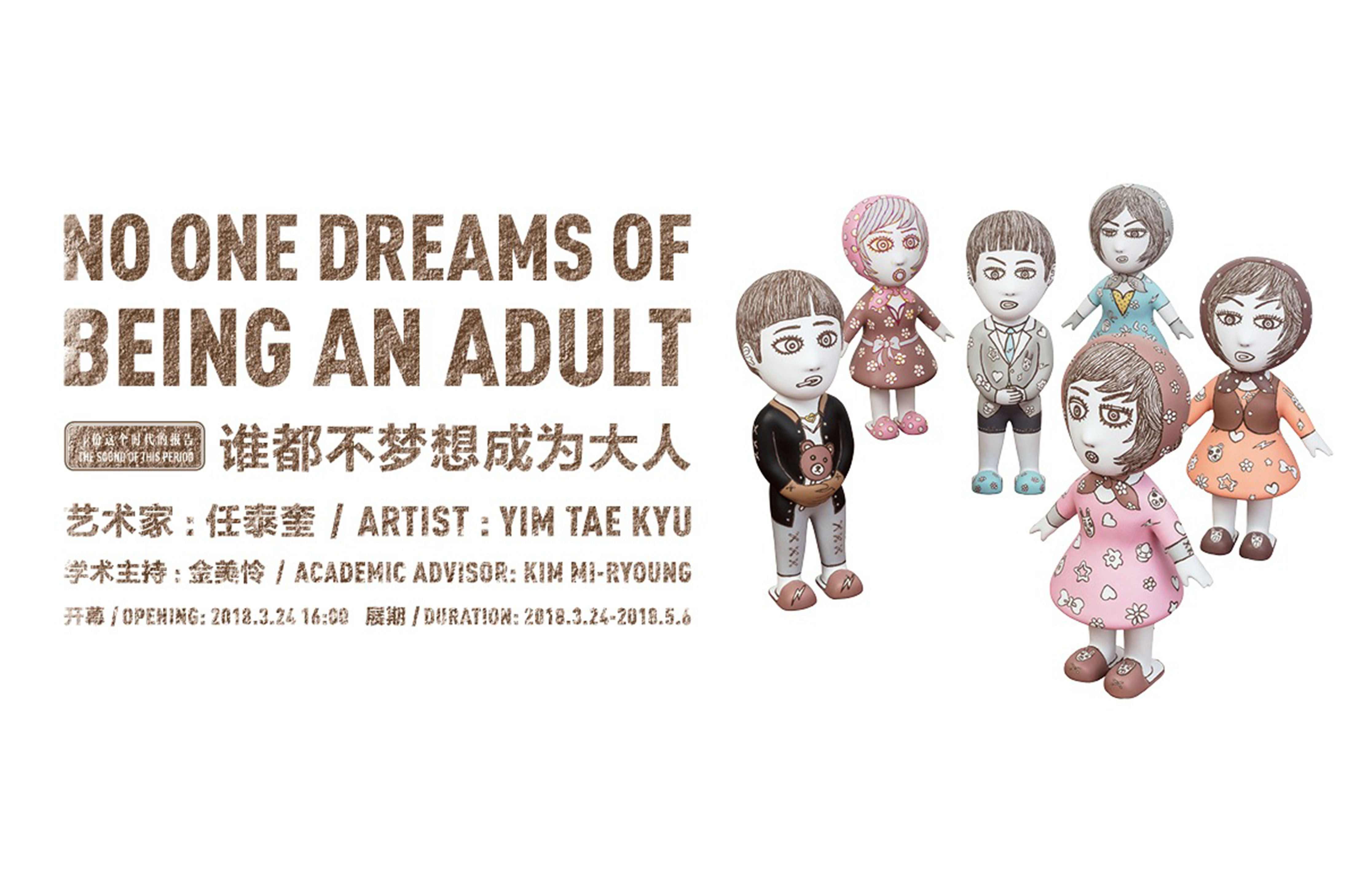The Sound of this Period: No One Dreams of Being an Adult
PVG ART - 798
2018.03.24-2018.05.06
D09, 798 Zhonger Street, No.4 Jiuxianqiao Road, Chaoyang District, Beijing
+86 10 5978 9282
The Sound of this Period: No One Dreams of Being an Adult
“When I was young, I would use the stars in the nightsky as pawns to draw lines and play hopscotch on summer nights. Then I would chat about anything, and gigglefor no reason. When I went camping, Iwas too excited to fall asleep, and counted hundreds of sheep with my friend,becoming a farmer with thousands of sheep every night. In the fall, I would play hide-and-seek at myfriend’s house whose tall reeds ruined my clothes. I kept on giggling even when I wasreprimanded by my parents. On a snowywinter day, I once threw myself on the snow like I was at a scene from a movie,and hurt my head.
I learned I was afraid of speed when I rode arollercoaster at an amusement park. I tried to go the other way after seeing aposter for a scary movie on the pole. Still,I enjoyed the excitement of running away from school during lunch time andgoing over the fence to go to the nearby park. I once dreamed about becoming a princess while reading the stories ofSnow White and Cinderella, and imagined having a house made of cookies andcandies while reading Hansel and Gretel. I hoped about having a guardian angel and a magic lamp when I read PeterPan and Aladdin. I once decided I wouldlike to become an artist after visiting a gallery for the first time… In college, I drank regularly because thefirst drink I had tasted great, and I was mesmerized by the sunset whilesitting on a bench in the School of Liberal Arts. I fell in love with the water of Han River, andvisited it all summer.
I imagined traveling to my previous life and to the futureon a time machine, and pictured how I would have lived 100 years ago, and howthe world would be like in 20 years. Although I couldn’t keep my promises every year, I once planned aboutdreaming for my future, like the government’s economic development plan for thenext five or 10 years.”
Tae Kyu Yim has presented the amusingand uplifting <Marginal Man> and <EREHWON> series for more than 15years. Unlike the fun and bright images on thesuperficial level, however, his secret criticism of the society from a distanceunderlies his work. You should be ableto notice it from his choice of topics. Hemust have wanted to depict his school, his society, his country, and the world,or any system that constantly generates marginal situations everywhere. These occur in many communities, butsocieties that have undergone fast and complicated changes, or a history ofradical changes, are highly likely to exclude, ignore, or look down on thosewith behaviors or viewpoints that are different from the mainstream. Yim’s work avoids dealing with the problemface-to-face. Thus, the marginal men onhis canvas are the people we see leading mundane lives, and he implies thatthey do not want fancy jobs or high positions that are goal-oriented withstrict rules. Instead, they can choose more creative and better lives through pleasantgames and other forms of leisure. Thenhe created a society of general people (Yim’s marginal men) through Erehwon. This imaginary world may visually seem like aplace that does not exist anywhere <No Where>, but it is actually a placewhere we live <Now here>. So Yim’s Erehwon seems to be different from the maincharacter in Samuel Butler’s novel, <Erewhon>, which was his motif abouta man who escaped from this irrational world in search of his dream. His work, whether it was about the <Marginal men> or <Erehwon>, has never left the current circumstance. The brightly colorful tones and strokes mayseem to be deceitfully sending us to a world of fantasy and dreams, but if youlook at each image carefully, he shows the acts we thoughtlessly and frequentlydo in everyday life from an extremely ordinary aspect of our current lives.
This exhibition is an extension of his past work. The characters in his <Marginal Man> and <Erehwon> series (ordinarypeople and their societies) have confronted the present. Taking into account his process so far, youmight have thought the characters from Erehwon would dash toward the Utopia, orroam in their own societies. However,the artist has brought the people of Erehwon into an extremely realisticpresent, away from games, as if he is sneering at the society. The main character of the current exhibitionis a large-sized portrait of a man.
In the middle of the exhibition hall, he is lookingdown on some naughty children, crying and covering one of his large eyes with hishand. This character, who seems to be representingthe fathers of our generation who have pursued rainbow dreams with ambition, isshouting while crying.
“Since when?
I have been accustomed to the rules and the norms ofschools, companies, and the society, and all of my curiosity, imagination,heartfelt emotions, and dreams have gone away. Did I even have any of these?
No one dreamed of being an adult!“
Those who went to college in the 90s like Yim are nowin their 40s. They used to be bright,full of dreams, courageous in fighting for justice, passionate about makingchanges in the society, and patient in leading ordinary lives. They must have seen the dark and ugly side ofmankind, and how helpless they are in the mob that they cannot evenresist. In this exhibition, the artistseems to show two different worlds and emotions that combine in the flow oftime, like in the novel of Marcel Proust, <Remembrance of ThingsPast>. Madeleine was a character in<Remembrance of Things Past>, and Erehwon, which has been a subject of theartist for years, would be in Yim’s <No One Dreams of Being an Adult>…
Kim, Mi- Ryoung <Creative ArtDirector of the Parkview Museum>
The Sound of this Period: No One Dreams of Being an Adult
PVG ART - 798
2018.03.24-2018.05.06
D09, 798 Zhonger Street, No.4 Jiuxianqiao Road, Chaoyang District, Beijing
+86 10 5978 9282
The Sound of this Period: No One Dreams of Being an Adult
“When I was young, I would use the stars in the nightsky as pawns to draw lines and play hopscotch on summer nights. Then I would chat about anything, and gigglefor no reason. When I went camping, Iwas too excited to fall asleep, and counted hundreds of sheep with my friend,becoming a farmer with thousands of sheep every night. In the fall, I would play hide-and-seek at myfriend’s house whose tall reeds ruined my clothes. I kept on giggling even when I wasreprimanded by my parents. On a snowywinter day, I once threw myself on the snow like I was at a scene from a movie,and hurt my head.
I learned I was afraid of speed when I rode arollercoaster at an amusement park. I tried to go the other way after seeing aposter for a scary movie on the pole. Still,I enjoyed the excitement of running away from school during lunch time andgoing over the fence to go to the nearby park. I once dreamed about becoming a princess while reading the stories ofSnow White and Cinderella, and imagined having a house made of cookies andcandies while reading Hansel and Gretel. I hoped about having a guardian angel and a magic lamp when I read PeterPan and Aladdin. I once decided I wouldlike to become an artist after visiting a gallery for the first time… In college, I drank regularly because thefirst drink I had tasted great, and I was mesmerized by the sunset whilesitting on a bench in the School of Liberal Arts. I fell in love with the water of Han River, andvisited it all summer.
I imagined traveling to my previous life and to the futureon a time machine, and pictured how I would have lived 100 years ago, and howthe world would be like in 20 years. Although I couldn’t keep my promises every year, I once planned aboutdreaming for my future, like the government’s economic development plan for thenext five or 10 years.”
Tae Kyu Yim has presented the amusingand uplifting <Marginal Man> and <EREHWON> series for more than 15years. Unlike the fun and bright images on thesuperficial level, however, his secret criticism of the society from a distanceunderlies his work. You should be ableto notice it from his choice of topics. Hemust have wanted to depict his school, his society, his country, and the world,or any system that constantly generates marginal situations everywhere. These occur in many communities, butsocieties that have undergone fast and complicated changes, or a history ofradical changes, are highly likely to exclude, ignore, or look down on thosewith behaviors or viewpoints that are different from the mainstream. Yim’s work avoids dealing with the problemface-to-face. Thus, the marginal men onhis canvas are the people we see leading mundane lives, and he implies thatthey do not want fancy jobs or high positions that are goal-oriented withstrict rules. Instead, they can choose more creative and better lives through pleasantgames and other forms of leisure. Thenhe created a society of general people (Yim’s marginal men) through Erehwon. This imaginary world may visually seem like aplace that does not exist anywhere <No Where>, but it is actually a placewhere we live <Now here>. So Yim’s Erehwon seems to be different from the maincharacter in Samuel Butler’s novel, <Erewhon>, which was his motif abouta man who escaped from this irrational world in search of his dream. His work, whether it was about the <Marginal men> or <Erehwon>, has never left the current circumstance. The brightly colorful tones and strokes mayseem to be deceitfully sending us to a world of fantasy and dreams, but if youlook at each image carefully, he shows the acts we thoughtlessly and frequentlydo in everyday life from an extremely ordinary aspect of our current lives.
This exhibition is an extension of his past work. The characters in his <Marginal Man> and <Erehwon> series (ordinarypeople and their societies) have confronted the present. Taking into account his process so far, youmight have thought the characters from Erehwon would dash toward the Utopia, orroam in their own societies. However,the artist has brought the people of Erehwon into an extremely realisticpresent, away from games, as if he is sneering at the society. The main character of the current exhibitionis a large-sized portrait of a man.
In the middle of the exhibition hall, he is lookingdown on some naughty children, crying and covering one of his large eyes with hishand. This character, who seems to be representingthe fathers of our generation who have pursued rainbow dreams with ambition, isshouting while crying.
“Since when?
I have been accustomed to the rules and the norms ofschools, companies, and the society, and all of my curiosity, imagination,heartfelt emotions, and dreams have gone away. Did I even have any of these?
No one dreamed of being an adult!“
Those who went to college in the 90s like Yim are nowin their 40s. They used to be bright,full of dreams, courageous in fighting for justice, passionate about makingchanges in the society, and patient in leading ordinary lives. They must have seen the dark and ugly side ofmankind, and how helpless they are in the mob that they cannot evenresist. In this exhibition, the artistseems to show two different worlds and emotions that combine in the flow oftime, like in the novel of Marcel Proust, <Remembrance of ThingsPast>. Madeleine was a character in<Remembrance of Things Past>, and Erehwon, which has been a subject of theartist for years, would be in Yim’s <No One Dreams of Being an Adult>…
Kim, Mi- Ryoung <Creative ArtDirector of the Parkview Museum>

